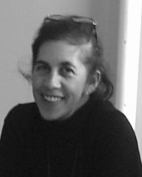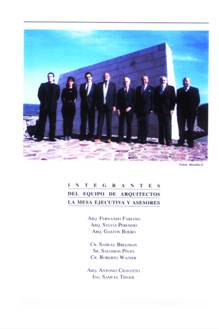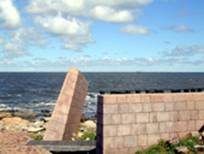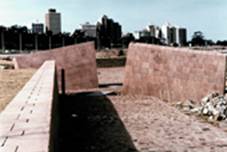Silvia Perossio Esteves |
||
 Silvia Perossio Silvia Perossio Esteves, was born in Montevideo January 10,1961. Their ancestors was of Ronco Scrivia, Francesco Perosio and Luigia Bondanza (The Perossio Artola). Graduates in 1989 of the Faculty of Architecture of the University of the Oriental Republic of the Uruguay, with the title of Architect. In 1999 it carries out a Mastery in Intelligent Buildings and Architecture Bioclimatic, in the University Technical College of Madrid – Technical School Superior of Architecture of Madrid. It has been performed like enclosed Teacher G. 3 of the Faculty of Architecture in the Workshops of Sommer, Sprechman, Otero and Perdomo. It is an author of various articles published, among the ones that is emphasized "The sense to look at" in contribution with the Architect Gastón Boero. Several works and won competitions of architecture, the most renowned: First Prize in National Competition of 1994 in Uruguay
This work is not a work that belong to the Jewish community. Is a National work. It was projected since the political point of view by the authorities of the epoch and carried out with popular effort.The Jewish community collaborated as other communities, like in general all the population supported the construction of this Memorial. The Memorial is found located in the Rambla Wilson of Montevideo front al golf field. It seen since the ravine is presented like an oblong line of stone. Consists of a wall of 10 meters of long, parallel al river Rio de La Plata. In its development has diverse characterizations. The Wall symbolizes al Jewish Town and the Break of the wall, to the Holocaust. Despite this it break, the wall maintains its integrity and this directed toward the hope. Since the coast the Memorial has another power. It is agreed for the western extreme along the Path of descent that conducts to the break. The structure of the construction of similar granite stones to "ashlars" generates a visual association as if was the Weepings wall and the Rambla south integrating al same time, the biblical culture and the national one. The break of the wall and of the adjacent pavements generates a situation of insecurity. There two they are removed large Stones of the bewilderment inclined toward the sea that impede a clear viewing of the future. There is a before and an after they are crossed through the Bridges of the doubt connects the break with the Valley of meditation . It is a place to be intimate, in which the wall acquires its maximum expression in dimensions. It is an urban space of great force, cut off from the ravine, expanded toward the natural coastal landscape. The pavement is irregular, of texture and similar color to the stones of the place. After the square the exit by an extensive stoop is produced and an ascending ramp that is elevated, in final, toward the Road of the hope. Their location to the edge of the river, suggests the opening of the water so that the even town to the liberty, as if the place went at the same time by where they entered the immigrants that found shelter in Uruguay
|
Developed by



